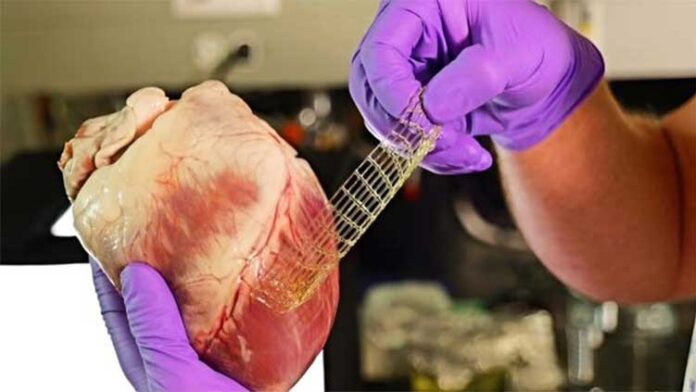Researchers have developed an innovative 3D printing technique that produces materials mimicking the strength and flexibility of human flesh.
The method, known as Continuous Curing after Light Exposure Aided by Redox initiation (CLEAR), is a collaboration between the University of Pennsylvania and the University of Colorado Boulder.
This groundbreaking technique promises materials with a unique combination of toughness, flexibility, and adaptability. These qualities allow the materials to withstand joint pressure, endure the continuous beating of the heart, and cater to individual patient needs.
The research team envisions that this technique will pave the way for advanced biomaterials such as cartilage patches, drug-infused cardiac dressings, and sutureless materials.
Senior author Jason Burdick noted that cardiac tissues and cartilage have a very limited capacity for self-healing. Once damaged, they do not recover. “By developing new, more resilient materials to aid the healing process, we can significantly improve patient outcomes,” he said.
3D printers create objects layer by layer using various materials, including living cells. While ordinary 3D-printed hydrogels lack the strength and flexibility required for medical applications, they are commonly used to fabricate artificial tissues.
Burdick illustrated, “Imagine if your heart were encased in hard plastic. It wouldn’t contract with each heartbeat; it would simply break apart.”
However, the new 3D printing method produces robust, flexible polymers capable of bonding with wet tissue. The CLEAR technique works by intertwining long molecules in the 3D-printed materials, inspired by the intricate entanglement of worms.
The newly developed materials underwent rigorous stretching and weight-bearing tests, including an unconventional method where a bicycle was ridden over the samples.
The results showed that these materials are significantly more durable than those produced using traditional 3D printing methods. These polymers also demonstrated impressive adhesion and compatibility with animal tissues and organs.
“We can now 3D print adhesive compounds strong enough to mechanically support tissue,” said Matt Davidson, a research associate in the Burdick Lab and co-first author. “This capability is unprecedented.”
Looking ahead, Burdick and his team hope to utilize these 3D-printed materials to treat heart abnormalities, support herniated discs, deliver tissue-healing medications directly to organs, and enable sutureless surgical closures.
Additionally, this technique is environmentally friendly as it eliminates the energy-intensive hardening step usually required in 3D printing.
First author and Burdick Lab researcher Abhishek Dhand remarked, “This is a simple 3D processing method that could eventually be used in academic labs and industry to enhance the mechanical properties of materials for a wide range of applications.”
The team has submitted a preliminary patent application and plans to conduct further studies to explore the materials’ impact on tissue.
The findings were reported in the journal Science.





















